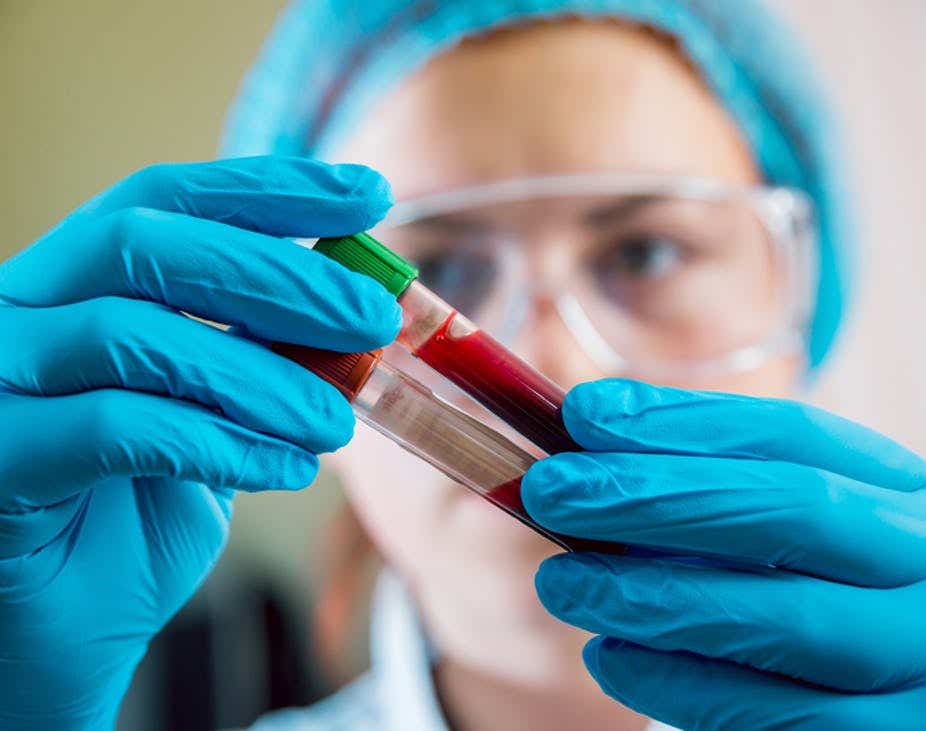New blood test could reveal your biological age and predict disease risk, study finds
Researchers have discovered markers in blood that can indicate a person’s biological age, irrespective of their birthdate.

Researchers have discovered markers in blood that can indicate a person's biological age, irrespective of their birthdate. (CREDIT: Creative Commons)
University of Pittsburgh researchers have discovered markers in blood that can indicate a person's biological age, irrespective of their birthdate, shedding light on why individuals age differently and suggesting potential interventions to slow aging and promote health.
"Age is more than just a number," emphasized senior author Aditi Gurkar, Ph.D., an assistant professor of geriatric medicine at Pitt's School of Medicine and a member of the Aging Institute, a collaboration between Pitt and UPMC.
"Imagine two people aged 65: One is active, biking to work and skiing on weekends, while the other struggles with basic physical tasks. Despite being the same age chronologically, they have vastly different biological ages. This question of why people age differently is what drives my research."
In their study published in Aging Cell, Gurkar and her team compared 196 older adults, categorizing them as either healthy or rapid agers based on their performance in simple walking challenges. These challenges assessed cardiovascular fitness, physical strength, and neurological health, all factors closely linked with aging-related health outcomes such as hospitalization, disability, and mortality.
Healthy agers, aged 75 years or older, could ascend a flight of stairs or walk for 15 minutes without resting, while rapid agers, aged 65 to 75 years, needed to rest during these tasks.
Notably, the rapid agers were younger chronologically than the healthy agers, allowing the researchers to focus on markers of biological aging rather than chronological age.
Related Stories:
To uncover a molecular signature of biological aging in blood samples, the researchers utilized metabolomics, an analysis of metabolites produced by chemical pathways in the body. Unlike genes, which remain relatively static throughout life, metabolites reflect current health status and can be influenced by lifestyle, diet, and environment.
Comparing the metabolomes of healthy and rapid agers revealed significant differences, suggesting that blood metabolites could serve as indicators of biological age.
Subsequently, the team identified 25 metabolites, termed the Healthy Aging Metabolic (HAM) Index, which outperformed other commonly used aging metrics in distinguishing between healthy and rapid agers.
Validation of the HAM Index in a separate cohort of older adults confirmed its accuracy in predicting individuals' ability to walk without stopping for 10 minutes, providing confidence in its predictive ability across different populations.
Using an artificial intelligence model, the researchers identified three key metabolites likely to influence healthy aging or rapid aging. Future studies will delve into the molecular pathways associated with these metabolites and explore potential interventions to slow down the aging process.
Looking ahead, Gurkar plans to investigate how the metabolome of younger individuals changes over time, with the ultimate goal of developing a blood test to estimate biological age and predict the risk of age-related diseases.
Study design: A total of 196 participants were recruited through the Claude D. Pepper Older Americans Independence Center at University of Pittsburgh. All study participants were medically-stable volunteers who were independently mobile. (CREDIT: Aging Cell)
"While predicting biological aging in older adults is promising, the real excitement lies in developing a blood test that can inform younger individuals about their biological age," Gurkar remarked. "Armed with this information, individuals could make lifestyle changes early on to potentially reverse their biological age."
Gurkar emphasized the importance of preventive measures in aging-related healthcare, envisioning a future where personalized interventions are tailored based on individuals' aging trajectories to delay disease onset and extend healthy years.
Stacked donut chart showing the distribution of metabolites in super (inner donut) and sub metabolic (outer donut) pathways as identified in KEGG (refer Table S3). (d) Number of connections deemed important (FDR corrected p-value for ρ
"In medicine today, we often wait until a problem arises before addressing it. However, aging doesn't follow that pattern—it's about prevention," Gurkar explained. "I believe the future of medicine lies in early identification of aging trajectories and personalized interventions to prolong healthspan."
Other authors on the study were Shruthi Hamsanathan, Ph.D., Tamil Anthonymuthu, Ph.D., Denise Prosser, Anna Lokshin, Ph.D., Susan L. Greenspan, M.D., Neil M. Resnick, M.D., Subashan Perera, Ph.D., and Satoshi Okawa, Ph.D., all of Pitt or UPMC; and Giri Narasimhan, Ph.D., of Florida International University.
For more science news stories check out our New Discoveries section at The Brighter Side of News.
Note: Materials provided above by The Brighter Side of News. Content may be edited for style and length.
Like these kind of feel good stories? Get the Brighter Side of News' newsletter.
Joshua Shavit
Science & Technology Writer | AI and Robotics Reporter
Joshua Shavit is a Los Angeles-based science and technology writer with a passion for exploring the breakthroughs shaping the future. As a contributor to The Brighter Side of News, he focuses on positive and transformative advancements in AI, technology, physics, engineering, robotics and space science. Joshua is currently working towards a Bachelor of Science in Business Administration at the University of California, Berkeley. He combines his academic background with a talent for storytelling, making complex scientific discoveries engaging and accessible. His work highlights the innovators behind the ideas, bringing readers closer to the people driving progress.



